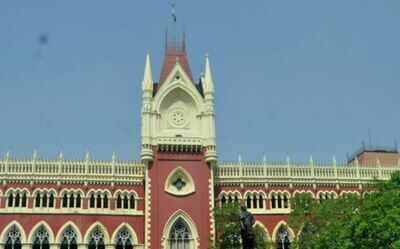
KOLKATA: In a first, the Calcutta High Court on Wednesday granted permission for live-streaming of proceedings in a matter pertaining to whether the children of Parsi Zoroastrian women married to non-Parsis can be allowed access to Atash Adaran (Fire Temple) at 91, Metcalfe Street, Kolkata.
Two special cameras and other equipment will be set up in the courtroom to telecast live footage of the proceedings on YouTube. The costs will be borne by the Parsi Zoroastrian Association Calcutta (PZAC), an applicant in the matter.
In September 2018, a three-judge bench of the Supreme Court had held that live-streaming of court proceedings will lead to greater transparency and serve as an instrument of greater accountability. “It will encourage the principle of open court, effectuate the public’s right to know and reduce dependence on second-hand views,” Justice D Y Chandrachud had observed.
On Wednesday, the counsel for PZAC, Phiroze Edulji, also highlighted the need for greater publicity in such cases before an HC bench of justices Sanjib Banerjee and Kausik Chanda. Live-streaming will uphold the rights of citizens, particularly the Parsi Zoroastrians, to access courts. It will also uphold their right to information, a pre-requisite to their Fundamental Right, to be able to freely express their opinions guaranteed under Article 19(I)(a) of the Constitution, the counsel submitted.
The division bench then granted permission for live-streaming during the final hearing, but no date for this has been fixed yet.
The original matter arose after Prochy N Mehta and Sanaya Mehta Vyas moved court against community leaders Noshir Tankariwala, Y J Dastoor and J S Bilimoria for opposing access of children born to Parsi Zoroastrian mothers and non-Parsi fathers to the Fire Temple even if such children are initiated to the Zoroastrian faith by the performance of Navjote ceremony. The PZAC also support this. However, there are no such restrictions on children of Parsi men who marry non-Parsi women, once the children are initiated to the Zoroastrian faith through Navjote (thread) ceremonies.
The PZAC, which claims to promote religious, social, economic, intellectual and general welfare of the Parsi Zoroastrians, has claimed in its application that the Parsi community comprises Parsis who are descended from original Persian emigrants and who are born to both Zoroastrian parent, Iranis from Persia professing the Zoroastrian religion who come to India either temporarily or permanently, and the children of Parsi fathers by ‘alien’ mothers who have been duly and properly admitted into the religion by performance of the Navjote ceremony.
“A person can be an Iranian Zoroastrian or may follow the teachings of Zoroaster even if neither of his/her parents is a Parsi Zoroastrian. Such a person will be counted a Zoroastrian but not a Parsi Zoroastrian and can’t worship or even be in the presence of the sacred Atash (fire) at the Fire Temple. That is why there are less than two lakh Parsis following the Zoroastrian faith in the world, while the number of Zoroastrians is four million,” Edulji submitted.
Two special cameras and other equipment will be set up in the courtroom to telecast live footage of the proceedings on YouTube. The costs will be borne by the Parsi Zoroastrian Association Calcutta (PZAC), an applicant in the matter.
In September 2018, a three-judge bench of the Supreme Court had held that live-streaming of court proceedings will lead to greater transparency and serve as an instrument of greater accountability. “It will encourage the principle of open court, effectuate the public’s right to know and reduce dependence on second-hand views,” Justice D Y Chandrachud had observed.
On Wednesday, the counsel for PZAC, Phiroze Edulji, also highlighted the need for greater publicity in such cases before an HC bench of justices Sanjib Banerjee and Kausik Chanda. Live-streaming will uphold the rights of citizens, particularly the Parsi Zoroastrians, to access courts. It will also uphold their right to information, a pre-requisite to their Fundamental Right, to be able to freely express their opinions guaranteed under Article 19(I)(a) of the Constitution, the counsel submitted.
The division bench then granted permission for live-streaming during the final hearing, but no date for this has been fixed yet.
The original matter arose after Prochy N Mehta and Sanaya Mehta Vyas moved court against community leaders Noshir Tankariwala, Y J Dastoor and J S Bilimoria for opposing access of children born to Parsi Zoroastrian mothers and non-Parsi fathers to the Fire Temple even if such children are initiated to the Zoroastrian faith by the performance of Navjote ceremony. The PZAC also support this. However, there are no such restrictions on children of Parsi men who marry non-Parsi women, once the children are initiated to the Zoroastrian faith through Navjote (thread) ceremonies.
The PZAC, which claims to promote religious, social, economic, intellectual and general welfare of the Parsi Zoroastrians, has claimed in its application that the Parsi community comprises Parsis who are descended from original Persian emigrants and who are born to both Zoroastrian parent, Iranis from Persia professing the Zoroastrian religion who come to India either temporarily or permanently, and the children of Parsi fathers by ‘alien’ mothers who have been duly and properly admitted into the religion by performance of the Navjote ceremony.
“A person can be an Iranian Zoroastrian or may follow the teachings of Zoroaster even if neither of his/her parents is a Parsi Zoroastrian. Such a person will be counted a Zoroastrian but not a Parsi Zoroastrian and can’t worship or even be in the presence of the sacred Atash (fire) at the Fire Temple. That is why there are less than two lakh Parsis following the Zoroastrian faith in the world, while the number of Zoroastrians is four million,” Edulji submitted.
Download The Times of India News App for Latest India News.
more from times of india news
Get the app









